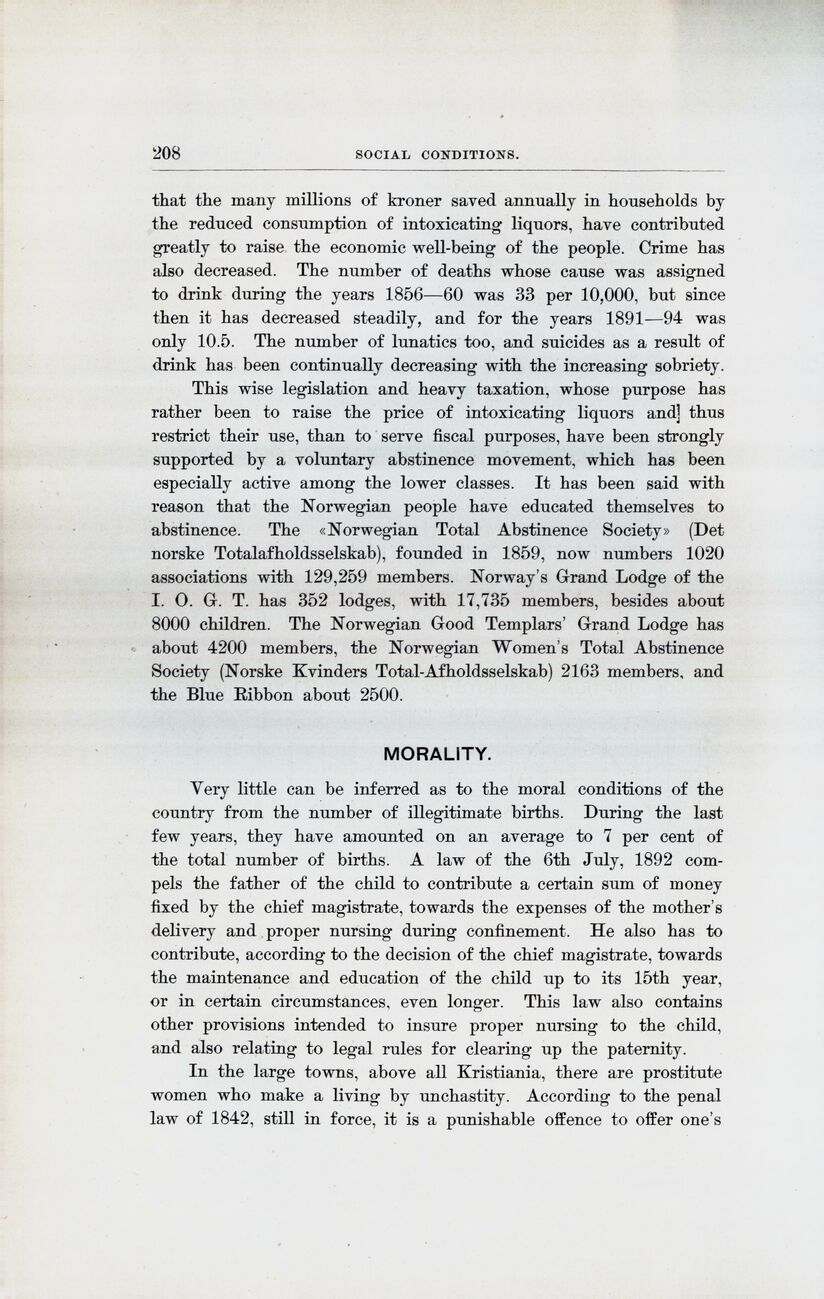
Full resolution (JPEG) - On this page / på denna sida - Social Conditions, by H. E. Berner

<< prev. page << föreg. sida << >> nästa sida >> next page >>
Below is the raw OCR text
from the above scanned image.
Do you see an error? Proofread the page now!
Här nedan syns maskintolkade texten från faksimilbilden ovan.
Ser du något fel? Korrekturläs sidan nu!
This page has been proofread at least once.
(diff)
(history)
Denna sida har korrekturlästs minst en gång.
(skillnad)
(historik)
that the many millions of kroner saved annually in households by
the reduced consumption of intoxicating liquors, have contributed
greatly to raise the economic well-being of the people. Crime has
also decreased. The number of deaths whose cause was assigned
to drink during the years 1856—60 was 33 per 10,000, but since
then it has decreased steadily, and for the years 1891—94 was
only 10.5. The number of lunatics too, and suicides as a result of
drink has been continually decreasing with the increasing sobriety.
This wise legislation and heavy taxation, whose purpose has
rather been to raise the price of intoxicating liquors and thus
restrict their use, than to serve fiscal purposes, have been strongly
supported by a voluntary abstinence movement, which has been
especially active among the lower classes. It has been said with
reason that the Norwegian people have educated themselves to
abstinence. The «Norwegian Total Abstinence Society» (Det
norske Totalafholdsselskab), founded in 1859. now numbers 1020
associations with 129,259 members. Norway’s Grand Lodge of the
I. O. G. T. has 352 lodges, with 17,735 members, besides about
8000 children. The Norwegian Good Templars Grand Lodge has
about 4200 members, the Norwegian Women’s Total Abstinence
Society (Norske Kvinders Total-Afholdsselskab) 2163 members, and
the Blue Ribbon about 2500.
<< prev. page << föreg. sida << >> nästa sida >> next page >>